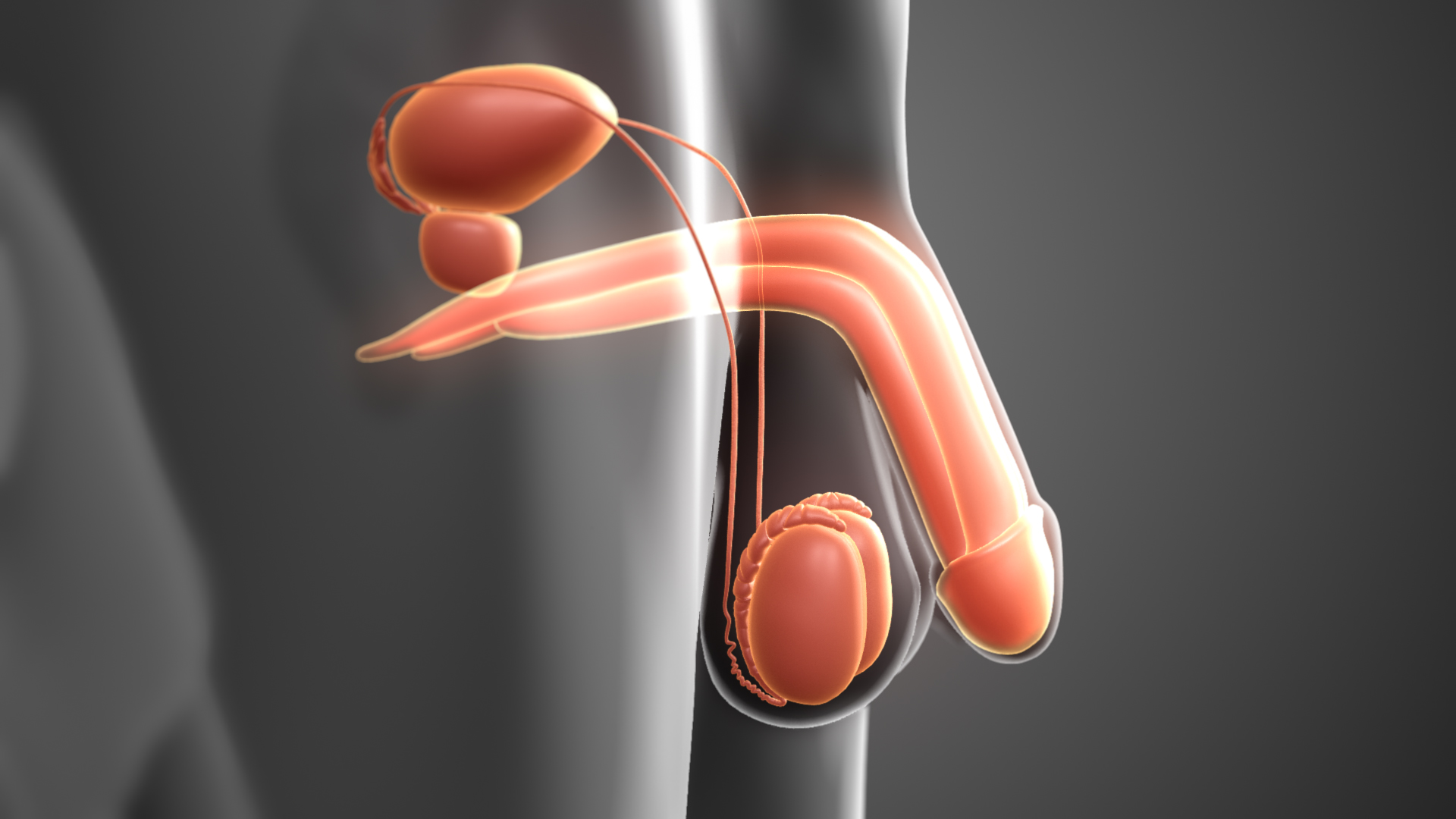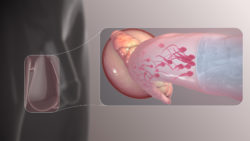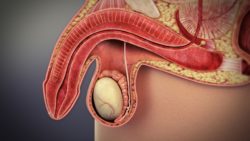Andropause, another word for Late-onset hypogonadism, is a rare endocrine condition in older men. Associated with a decrease in testosterone, clinical symptoms are often sexual in nature, including decreased sexual desire, fewer erections, etc.

3D medical animation still depicting Andropause condition
Andropause is a misnomer as it implies a sudden change in hormone levels similar to what women experience in menopause. However, it is unlike menopause in that the decrease in testosterone and the development of symptoms is more gradual than what occurs in women.
Andropause is associated with a number of symptoms, like osteoporosis, that can have a serious impact on health if neglected. Approximately 30% of men in their 50s experience symptoms caused by low testosterone levels.
SHBG
As men age, two things happen. First, the body makes less testosterone, and second, there is increased production of sex hormone binding globulin (SHBG), which pulls available testosterone circulating in the blood. As a result, the bioavailability of usable, unbound testosterone decreases. This may cause various physical and possibly mental changes such as mood swings or fatigue.
Treatment and Prevention
1. Replacing testosterone in the blood is the most common treatment for men going through andropause. Testosterone is available in a variety of different preparations including skin patches, capsules, gels, and injections.
A skin patch allows a slow, steady release of testosterone into the bloodstream. It is applied once a day to a dry area of skin on the back, abdomen, upper arms, or thighs.
Testosterone gel is also applied directly to the skin, usually on the arms.
Capsules are yet another option for testosterone replacement. Men with liver disease, poor liver function, serious heart or kidney disease, or too much calcium in their blood should avoid testosterone capsules.
Intramuscular injections of testosterone cypionate and testosterone enanthate are given every 2 to 4 weeks.
2. Lifestyle changes such as increased exercise, stress reduction, and good nutrition also help.
Risks
Testosterone therapy carries risks. Males who are prostate or breast cancer patients are advised to avoid testosterone therapy. Also, other conditions such as certain heart patients, enlarged prostate, or kidney or liver disease, or people who are taking blood-thinning medications, are some of the situations that might be contraindicated for testosterone therapy.
The Bottom line
Late-onset hypogonadism or andropause is a common condition amongst ageing men. Whether you are in the camp of “grow old gracefully” or “fight it every step of the way”, it is important to spread awareness of the condition as it is often overlooked.
Disclaimer: The information in no way constitutes, or should be construed as medical advice. Nor is the above article an endorsement of any research findings discussed in the article an endorsement for any of the source publications.

Vasalgel: A male contraceptive to look forward to…
Finally it looks like a male contraceptive method that is non-surgical, non-occlusive and reversible is on its way. Read More..

Peyronie’s disease: Causes and Treatments
When a fibrous plaque develops inside the the male penis, it results in a painful condition called Peyronie's disease. Peyronie’s disease is a connective tissue disorder that affects the soft tissue of the penis, causing abnormal curvature, shortening and often erectile dysfunction. Read More..








